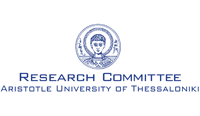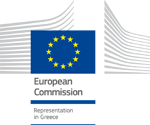Dr George Damaskinidis
SemioLab, School of Philosophy, A.U.Th
This email address is being protected from spambots. You need JavaScript enabled to view it.
Abstract
The research examines illustrated stories from the translation studies point of view. In particular, it is claimed that the images of an illustrated story are intersemiotic translations of the verbal elements, and as a consequence, they could be analyzed by employing tools that are similar to those employed by interlingual translation. The aim of this research is to present some of the difficulties in identifying true love by means of translating verbal and non-verbal semiotic signs of communication. First, the research sets the theoretical background where illustration is regarded as translation centred around theories of recreation, since we could approach illustration as a reappearance of the verbal elements in a visual form. Among others, it is studied the interrelations created by intersemioticity as a means of communication, both for verbal and non-verbal signs of communication. Intersemioticity will be studies by taking into account the fact that illustration and the verbal text present two different versions of the same story. In the second part, it is examined three techniques with which illustration could translate the verbal part: by literally reproducing the verbal elements in the image, by focusing on narrative elements, and by adapting the image to a specific ideology or artistic trend. The third part examines the illustrated story True Love to find out how the intersemioticity of the image and the verbal part reproduce stereotypical gendered roles around the concept of true love, as these have been identified in research work.
Keywords
gender roles, illustrated story, intersemiotic translation, social stereotypes, true love
Bibliography
- Alvstad, C. (2008). Illustrations and ambiguity in eighteen illustrated translations of Hans Christian Andersen’s ‘The Steadfast Tin Soldier.Meta, 53(1), 90-103.
- Barthes, R. (1961). The rhetoric of the image. Ιn Heath, S. (ed., trans.) (1977) Image, Music, Text. New York: Hill and Wang.
- Nicola D. (2015). Intersemiotic translation: Theories, problems, analysis. Semiotica, 206, 181–205.
- England, Dawn Elizabeth. Descartes, Lara & Collier-Meek, Melissa A. (2011). Gender role portrayal and the Disney princesses. Sex Roles, 64, 555–567.
- Goris, A. (2015). Hidden Codes of Love: The Materiality of the Category Romance Novel. Belphégor , Distinctions that matter. 13-1. http://belphegor.revues.org/616
- Jakobson, R. (1959 [1996]). On linguistic aspects of translation. In Brower, R. A. (ed.), On Translation, New York, Oxford University Press.
- Pereira, N. M. (2008). Book illustration as (intersemiotic) translation: Pictures translating words. Meta, 53(1), 104-119.
- Ranta, M. (2016). The (pictorial) construction of collective identities in the Third Reich. Language and Semiotic Studies, 2(3), 107-124.
- Richardson, J.E. & Burridge, J.D. (2008). Analysing media discourses. Social Semiotics, 18(3), 273 - 276.
- The Bright Side Of Life, Inc. (n.d.). Inspirations: Relationships. True Love. https://brightside.me/inspiration-relationships/14-charming-illustrations-that-sum-up-perfectly-what-true-love-is-221905/







